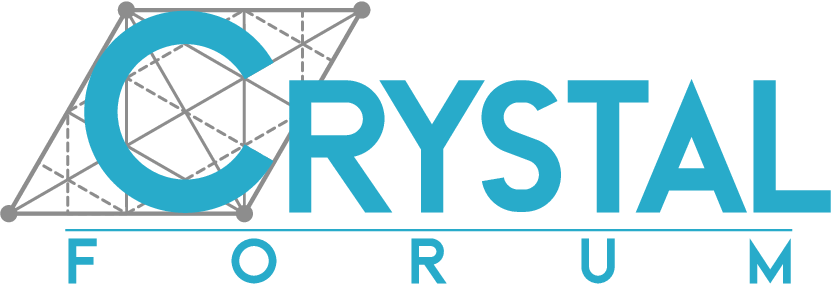QHA in monoclinic system with non-constant angle
-
Dear crystal-experts,
I have carried out a lattice dynamics calculation within QHA and I am impressed with crystal23.
However, my crystal strcture is monoclinic, and it seems to me that the EOS calculation prior to QHA is carried out optimizing a,b,c but not the one free angle. As if it had been written not for the most general case, but for orthogonal cases only.
Do I understand this correct?
If so, is there a way how to "switch on" full monoclinic optimization?Thank you!
Kind regards,
Georg Spiekermann -
Hi Georg,
The EOS/QHA algorithm in CRYSTAL is general (i.e. with no particular restrictive assumptions on the space group) so I would expect it to find the optimal structure at each explored volume by fully relaxing all symmetry-allowed structural degrees of freedom.
Is beta not changing at all or "just" not as much as expected?
Happy to have a look at your input/output files if you think it could help.
-
Dear Alessandro,
thank you for your quick answer!
Can you give me a hint where to find the optimized cells from the EOS calculations?
I was irritated, because that in the log file only the EOS-volumes are indicated, but not the angles.
And in the QHA-output, naturally only the lattice constants a,b,c are reported, again not angles.The EOS-output looks like this:
EOSEOSEOSEOSEOSEOSEOSEOSEOSEOSEOSEOSEOSEOSEOSEOSEOSEOSEOSEOSEOSEOSEOSEOSEOSEOS
VOLUME (A^3) ENERGY (a.u.) DIFFERENCE RELATIVE
TO CENTRAL
3.23014700E+02 -4.11365657E+03 2.41646382E-03
3.43259302E+02 -4.11365655E+03 2.43344879E-03
3.53634103E+02 -4.11364971E+03 9.27344625E-03
SORTING VOLUMES/ENERGIES
VOLUME (A^3) ENERGY (a.u.)
323.014700 -4.113656565586E+03
333.070169 -4.113658982050E+03
343.259302 -4.113656548601E+03
353.634103 -4.113649708604E+03
+++++++ FITTING USING ALL POINTS +++++++The QHA-output looks like this:
LINEAR THERMAL EXPANSION OF CONVENTIONAL LATTICE PARAMETERS
T (K) a (Ang) ALPHA_a (1/K) b (Ang) ALPHA_b (1/K) c (Ang) ALPHA_c (1/K) 20.00 7.39882492 0.32828E-06 7.59681960 0.71307E-06 6.80869752 0.62279E-06 95.56 7.39878526 0.31695E-06 7.59673118 0.68852E-06 6.80862837 0.60167E-06171.11 7.39919194 0.10446E-05 7.59763816 0.22691E-05 6.80933828 0.19836E-05
The QHA input looks like this:
EXTERNAL
QHA
TEMPERAT
10 20 700
ENDAnd the initial input for the geometry optimization looks like this (this one is even triclinic):
CRYSTAL
0 0 0
2
7.3769 7.6793 6.9013 106.3830 112.3550 99.0830
13
40 0.00000 0.00000 0.00000
19 1.29314 1.19129 0.70840
14 1.18689 0.74146 0.30932
14 0.83411 0.37735 0.15081
14 0.50179 0.31904 0.31345
8 1.38739 0.80941 0.55289
8 1.25595 0.64695 0.11554
8 1.10769 0.91837 0.27965
8 1.00922 0.58169 0.30189
8 0.91191 0.20221 0.18425
8 0.64290 0.40138 0.20756
8 0.28164 0.19499 0.11583
8 0.50000 0.50000 0.50000
OPTGEOM
FULLOPTG
TOLDEX
6.000000E-04
TOLDEG
3.000000E-04
TOLDEE
1.000000E-10
ENDOPTThank you again for your advise and time!
Best regards,
Georg -
Hi Georg,
In the .out output file you can find the optimized structures at different volumes from the EOS. By searching for "CELL DEFORMATION" you will get to the point of the output where a deformation (compression/expansion) is applied. The corresponding strain matrix is printed right below. Something like:
******************************************************************************** CELL DEFORMATION ******************************************************************************* ELASTIC STRAIN MATRIX (ADIMENSIONAL) 1 -0.0101017008 -0.0000000000 -0.0000000000 2 -0.0000000000 -0.0101017008 -0.0000000000 3 -0.0000000000 -0.0000000000 -0.0101017008From there, by searching for "OPT END" you will get to the point where the constant-volume optimization ended. Something like this:
****************************************************************** * OPT END - CONVERGED * E(AU): -1.385471079118E+04 POINTS 16 * ******************************************************************Right below this, you will find the optimized structure. First a list of atomic neighbors and then the actual lattice parameters and atomic coordinates right below the string "FINAL OPTIMIZED GEOMETRY".
From here, by searching again for "CELL DEFORMATION" you will get to the second explored volume, and so on and so forth.
In this way you can check how all structural parameters (including the beta angle) evolve with volume.
It is true that at the end of the QHA calculation, CRYSTAL is currently not computing the thermal expansion coefficients for the lattice angles. I initially coded just the volumetric thermal expansion coefficient, then added the three linear coefficients for the lattice vectors. I may have to add those for the angles as well.
Still, there should be the necessary information in the output to evaluate it. EOS gives you the dependence of beta on the volume (see above) and QHA the dependence of the volume on temperature.
Hope this helps,
-
Hi Alessandro,
thank you very much for these detailed explanations!
Crystal is an amazing program, and I am just starting to explore its powerful thermoelastic capabilities.
Kind regards,
Georg



